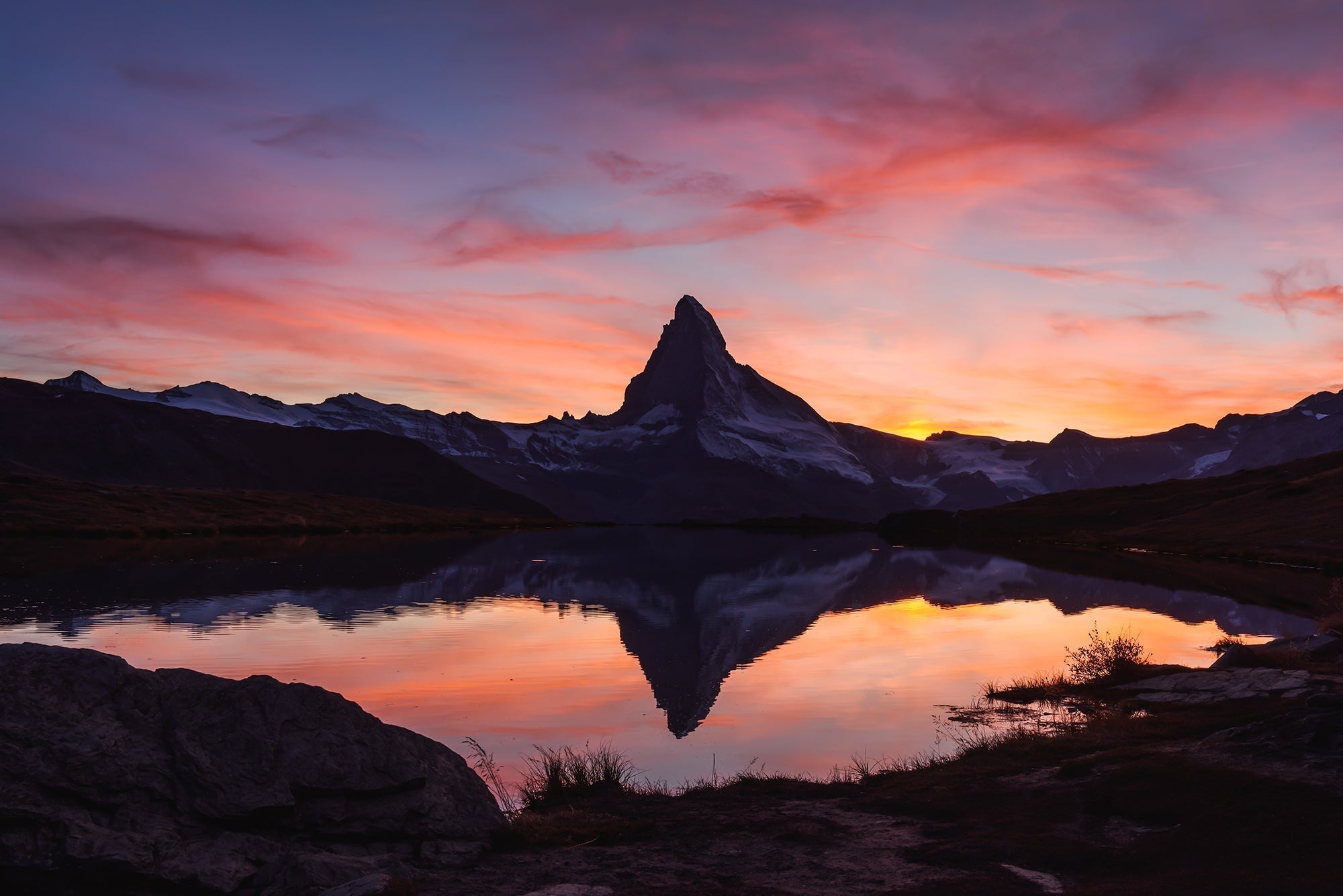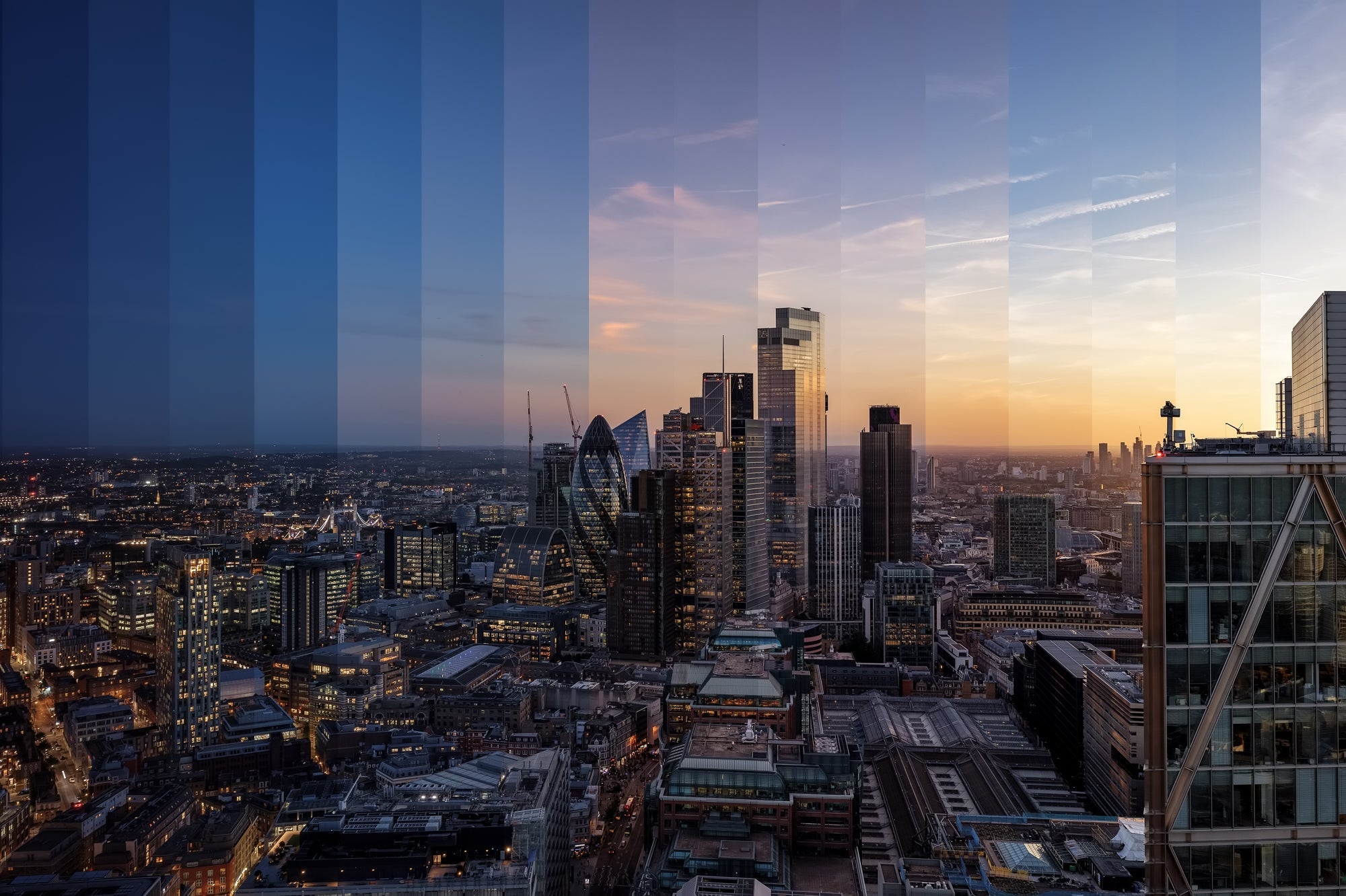
Composition in landscape photography
Who doesn't know that feeling when you look at a really good landscape photo and are not only impressed by its beauty, but also have the feeling that you are being drawn into the picture and taken into the unique landscape. A successful landscape picture looks spontaneous and fresh, like a snapshot, but is usually a carefully composed affair and requires the photographer to have a lot of prior knowledge about the right composition as well as skill.
Basic themes of landscape composition
When it comes to composing a good landscape image, the various components must be arranged in a sensible and aesthetically pleasing way. Particular attention should be paid to the different lines in the picture that guide the viewer's eye. Horizontal and vertical lines occur naturally in most pictures, but diagonal or curved lines can also be incorporated in a targeted manner. They give the image structure and cohesion and lead the eye naturally to the focal point of the image.
For your next photo tour, our high-quality camera bags and camera backpacks offer the perfect protection for your equipment. This keeps your camera and accessories safely stowed away while you can concentrate fully on the perfect landscape image.
This focal point of the picture can be defined by special formations or eye-catching objects, for example. The natural shapes of mountains, hills, trees or rocks can lend depth and complexity to the image. The focal point of the image can also be formed by special splashes of color, for example, that contrast with the background.
In landscape photography, it is also interesting to play with the different textures of various image elements such as rocks, plants or bodies of water. These often become particularly visible in the interplay of light and shadow, which can also lend the image a very special atmosphere. In landscape composition, these basic aspects offer the photographer the opportunity to become clear about the structure of the image and its focus and to consciously decide on its structure.
Composition rules in landscape photography
If you are new to landscape photography, there are a few tried and tested guidelines that can help you to create balanced and appealing images, especially at the beginning. With time and experience, however, you should increasingly move away from rigid rules and instead experiment freely with image composition. The following guidelines for a balanced composition in landscape photography are therefore intended solely as a guide and source of inspiration. Some of the best pictures are created when you break these rules and dare to take surprising and refreshingly different pictures.
To take a harmonious picture, you can use the golden ratio as a guide. This is a specific proportion that can be precisely determined using a mathematical formula. This ratio was derived many centuries ago by scientists from observing nature and is perceived by the human eye as particularly aesthetic. If this is too complicated for you, you can also use the rule of thirds for practical implementation. This comes quite close to the golden ratio, but is easier to apply. The picture is divided into nine equal parts by two horizontal and two vertical lines. The most important picture elements should then be positioned along these lines or at their intersections. As with the golden ratio, a picture designed according to the rule of thirds is perceived as particularly balanced and beautiful.
When composing landscape photography, particular attention should be paid to leading lines such as paths, rivers or fences, which direct the viewer's gaze through the picture. They create depth and dynamism and should be chosen very deliberately. Possible symmetries or repetitive patterns in the image should also be taken into account and can add rhythm and complexity to the image if they are deliberately emphasized. Reflections in water, for example, are particularly suitable for this purpose.
To give the picture a focal point where the viewer's eye can rest, you can choose a particularly beautiful or striking detail of the landscape. This could be a stone, a flower or a mossy tree stump, for example. Elements such as branches, rocks or archways can also be placed in the foreground to contribute to the perspective of the picture and frame the landscape.
Practical tips for the landscape composition
To find the best perspective and the ideal angle for landscape photography, you should not just try out the shot from a fixed location. Rather, when composing landscape views, it is advantageous to keep changing locations and trying out different perspectives. In this way, you often find an even better composition than you initially thought of.
With our comfortable camera backpacks, you are also ideally equipped for longer photo hikes. They not only offer optimum carrying comfort, but also plenty of space for your camera, lenses and accessories - perfect for any outdoor session.
The ideal equipment for a landscape photography expedition definitely includes a good tripod, which enables precise and blur-free shots, but above all should also be light and easy to handle. It can also be helpful to have lenses with different focal lengths with you in order to achieve different effects. Wide-angle lenses are generally particularly suitable for capturing overviews of wide landscapes, while you might like to have a telephoto lens with you for details.
In order not only to capture a beautiful landscape, but also to convey a mood and a real story with the picture, you should choose the composition carefully. What the image conveys is also significantly influenced by the colors and lighting conditions. Particularly beautiful light generally prevails during the golden morning and evening hours, but even the bright midday light can convey a very special atmosphere when used correctly. So think about the time of day you want to take the photo as well as the subject and the exact composition of the picture. However, if the light on location is not quite ideal, a few things can still be improved in post-production.
Conclusion
If you want to create impressive landscape shots that not only look good, but also convey a mood or tell a story and thus become memorable, there is no getting around good composition of the image. Composition guidelines such as the rule of thirds or the golden ratio can serve as a guideline for a balanced and aesthetically pleasing overall impression. However, the leading lines of the picture and a particularly appealing focal point should also be taken into account. By observing these basic aspects, you can already take good landscape photos. However, if you want to create really surprising and captivating images, you may want to break some of these rules again over time and embark on an experimental path. Like any craft, the art of composition should first be fully mastered so that you can then play with it freely and creatively.
Discover the versatile selection of our Oberwerth camera bags and accessories to transport your equipment in style and safety. Ideal for anyone who wants to combine their passion for landscape photography with the perfect equipment. Browse our store now and be inspired!

